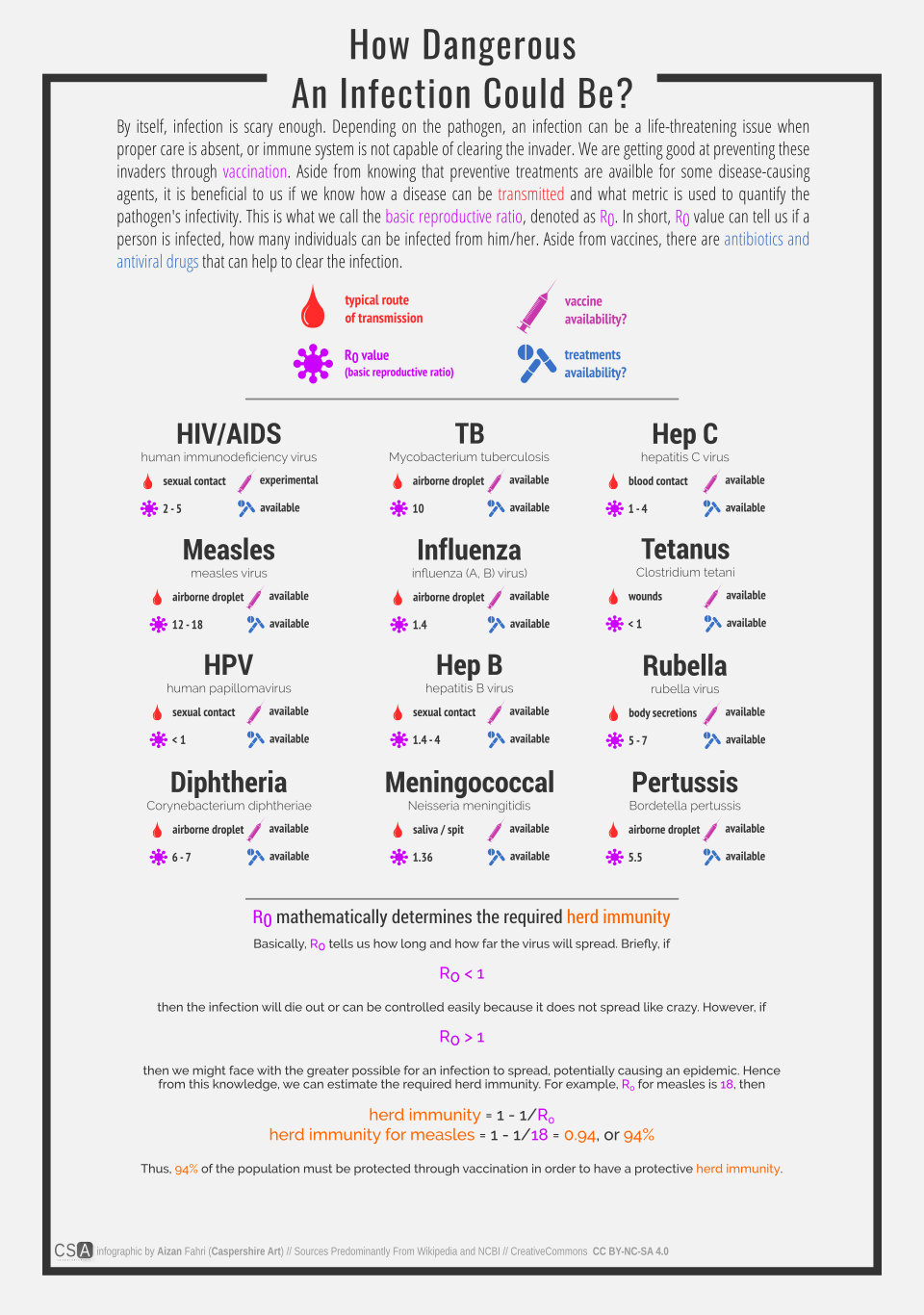There are a couple of things that could dictate how dangerous a biological virus could be. First, the potential a virus has to replicate inside a human host. Second, through what mechanism it can shield itself from being detected by the cellular immune response (e.g. RIG-I). Third, how good the virus at shutting off cellular protein machinery (IAV’s NS1 protein).
And let’s look at another factor for viral spread. Epidemiologists call this as the R-naught factor. It means how good a virus at spreading and infecting other people. This number dictates the sufficient herd immunity to prevent an outbreak. For example, measles virus has the highest R-naught value, hovering between 12-18 and it spreads through airborne droplets. What about HIV? R-naught of 2-5 and it spreads primarily through sexual contact.
I made this infographic back in December 2016 just for fun.
 Infographic made possible with Inkscape and creatitivy. CC-BY 4.0
Infographic made possible with Inkscape and creatitivy. CC-BY 4.0
Like I always say, learning how to use Inkscape can enable a person to do this kind of magic.